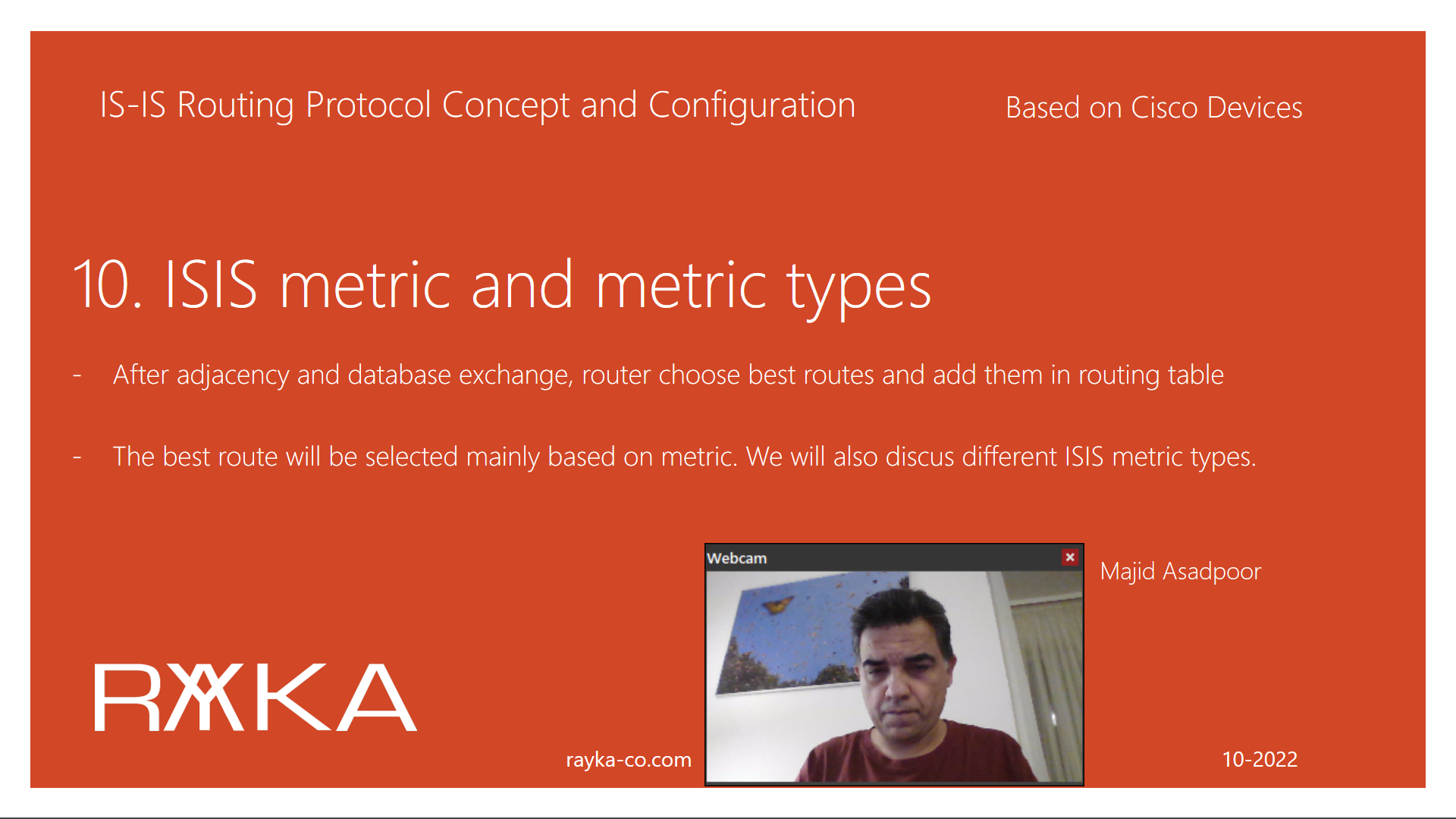Description
IS-IS Introduction
1. IS-IS Routing Protocol Overview Preview
ISIS Area Design and how it differs from OSPF is the topic of this section. And we will answer this question why area design is important.
3. ISIS Level 1 and Level 2 Routing Preview
ISIS Level 1 and Level 2 Routing knowledge is critical to understand how actually routing works in this protocol.
4. ISIS NET Address Format Preview
ISIS NET Address is what we have to configure when we use ISIS routing protocol in the network.
This is because the ISIS protocol was originally developed for CLNS networks. Although we use IP address to route IP traffic, but ISIS control packets still use CLNS address to communicate with each other.
ISIS NET address is a type of CLNS address that we will discuss in this section.
Cisco ISIS Configuration and Troubleshooting
5. Cisco ISIS Configuration Example with Single Area Preview
Cisco ISIS configuration example with a single area is the discussion topic of this section.
We will learn how to enable ISIS routing protocol, configure net address, activate ISIS on the interfaces and change the type of ISIS router as level1 or level2.
6. Cisco ISIS Multi Area Configuration Example Preview
Cisco ISIS configuration example with a multi area topology is the discussion topic of this section.
Especially we will learn how to configure ISIS net address in multi area topology and how to configure router type and interface type between Level1 and Level2.
7. ISIS Adjacency Fundamental Preview
ISIS Adjacency details are the first step to learn not only the ISIS routing protocol but all other routing protocols, which is discussed in this section.
We will discuss L1 and L2 Adjacency. ISIS Adjacency Differences in LAN and Point-to-Point Interfaces. Adjacency Timers, ISIS Adjacency requirements and also ISIS Adjacency States which help us in troubleshooting.
8. ISIS LSP Types and Database Exchange Preview
ISIS LSP types and database exchange detail is what we discuss after adjacency comes up in ISIS and it is the topic of this section.
To better understand database exchange process in ISIS routing protocol, we will compare ISIS packets with OSPF packets, ISIS LSP types with OSPF LSA types and finally we will have a configuration example to demonstrate ISIS LSP packet details.
9. ISIS in Broadcast Network and Pseudonode LSP Preview
ISIS in broadcast network is the topic of this section.
In the previous section we have seen that in ISIS routing protocol, each router advertises exactly one LSP to advertise its IP and topology information. On the broadcast network, there is an additional LSP with the name of pseudonode LSP which is advertised by DIS.
In this section we will discuss how psudonode LSP reduces the overhead of the ISIS database exchange process.
10. ISIS Metric and Metric Types Preview
ISIS metric and metric types are the topic of this section.
After the adjacency and database exchange process that we discussed in the previous sections, it is now time for the routers to calculate the best route to each destination by running SPF algorithm and adding them into the routing table.
11. ISIS Convergence Process Preview
ISIS convergence process, when there is a change in the network, is what we discuss in this section.
What happens when a change occurs in the network and how the router’s routing table is updated? This is done through the convergence process which we discuss in this section.
12. ISIS Authentication Types Preview
ISIS Authentication Types is what we discuss in this section especially that authentication in ISIS is a little different from than other routing protocols.
There are two types of authentication in ISIS. Authentication on Hello packet and authentication on other ISIS packets such as LSP, CSNP and PSNP.
13. ISIS Default Route Advertisement Preview
ISIS default route advertisement is what we discuss in this section.
In ISIS like all other routing protocols, you have the option to advertise the default route through the protocol dynamically.
In ISIS it is done with using “default-information originate” command.
ISIS route leaking gives the capability to redistribute level 2 routes into level 1 domain. It can help to prevent sub-optimal routing when there is more than one L1/L2 router in an ISIS area.
15. Cisco ISIS IPv6 Configuration Example Preview
Cisco ISIS IPv6 configuration example in a single topology is the topic of this section.
Single topology means we assume we have common and equal IPv4 and IPv6 topology.
Multiple topology, in which IPv4 and IPv6 can have a different topology, will be discussed in the next section




















Reviews
There are no reviews yet.